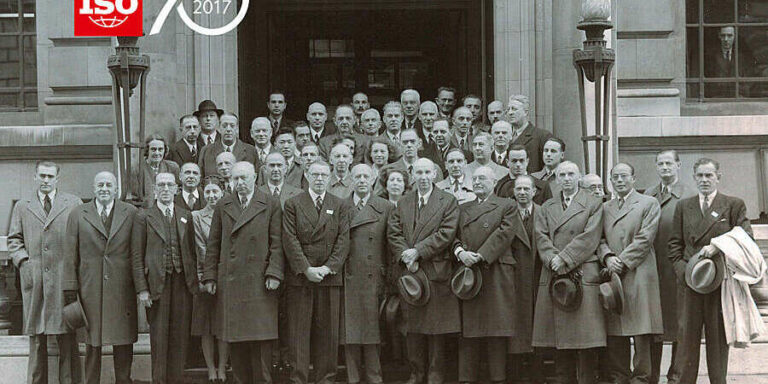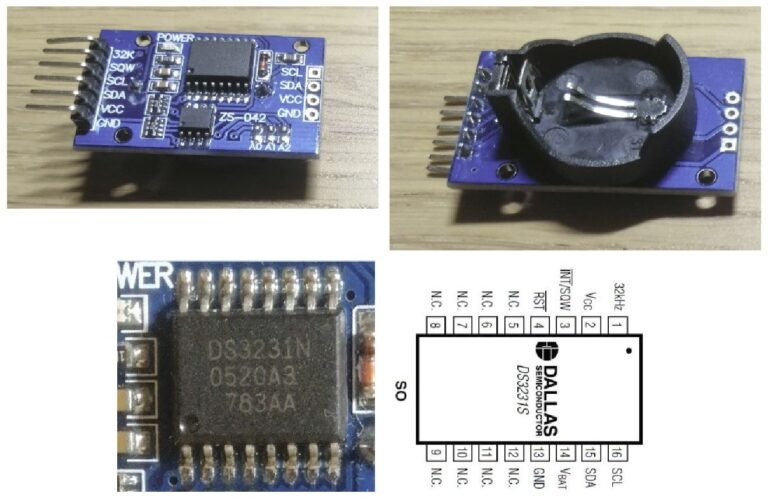“Import substitution” in video surveillance. Part three: Research Center “Technology”
Some domestic cameras are so difficult to buy that I have doubts about their existence. In any case, I was unable to get through the managers of the Research Center “Technology” – barrage of questions about my organization, object, Taxpayer Identification Number, etc. came raining down, from which I concluded that they were cautious and did not sell cameras to private individuals. In the end, I managed to find their camera only through a private person – but at the time of writing, it is still on its way to Tyumen.
However, there was a person more fortunate than me – he managed not only to touch the next “import-substituting” IP cameras, but also to write very competent review. To all other, Maxim Tulov was kind enough to allow me to simply repost it here. Therefore, the format of the article will be slightly different, but at the end I will try to add some conclusions from myself.
Context
All text is presented preserving the author’s spelling and punctuation. However, I took the liberty of removing links that are not related to the subject of the article and slightly adjusting the structure for greater readability. Sometimes a lot of time passed between the posts from which the article was compiled – where I could, I corrected it without distorting the meaning.
The original article remains unchanged follow this link.
Review of 360+1° IP camera from Research Center “Technology”
Well, let’s see what’s inside…
Of course, I will describe everything both in terms of hardware and software… For now there are more questions than answers…
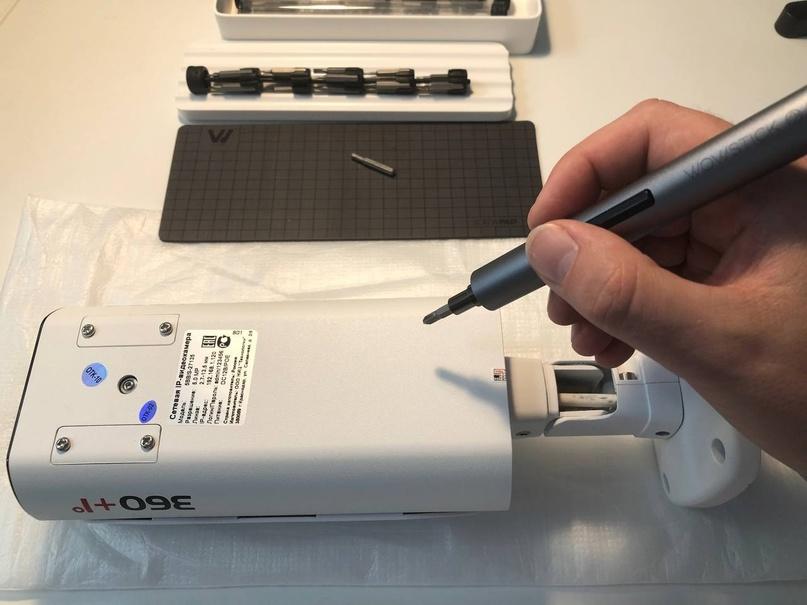
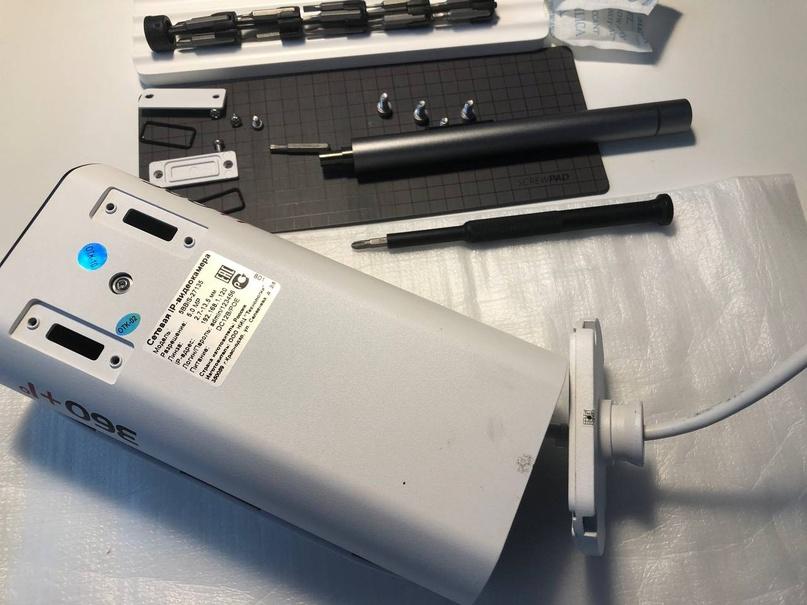
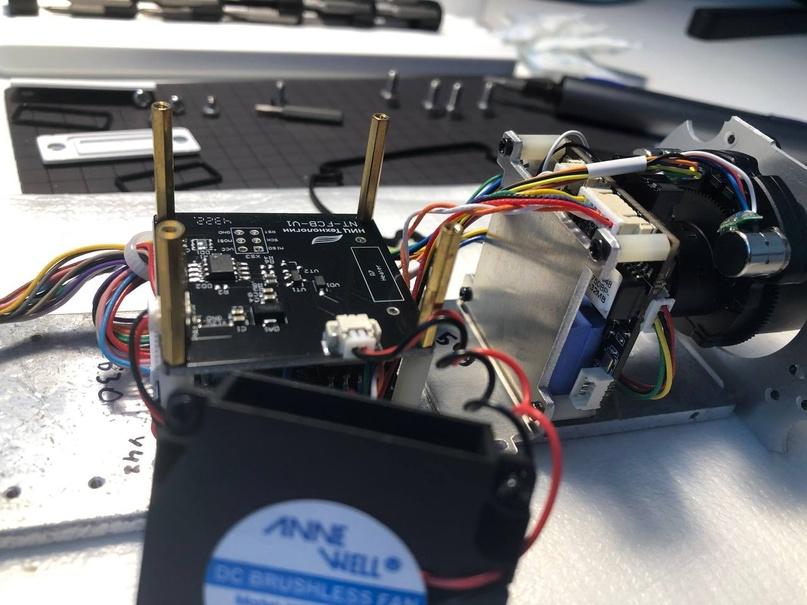
Firmware problems
So, 5BBNN-27135. This is exactly what the camera I ordered is called on the manufacturer’s website. But the camera that arrived is called differently 5BBIS-27135. Of course, I tried to find a camera with my name. This camera does not exist on the manufacturer’s website. And in general, these Internets of yours don’t know anything about her. Then I looked through ONVIF Device Manager – MS750BP. In the web interface, in the Update section, the camera is also called MS750BP.


The manager’s answer surprised me wildly.
I quote:
“NN and IS are firmware designations. NN is the one you saw at the exhibition. IS is the one you have. It is the most stable now.”
Those. I found a camera on the website that meets the customer’s requirements. I put it into the project. The project has passed all examinations. Time to mount. What should I tell the customer at this moment??? “Sorry, those cameras that I included in your project, which are listed in your specifications, which have passed all the examinations, do not work stably. But I can offer you others that work stably. However, for this you will need to go through all the examinations again.” Guys, are you serious???
Imagine you came to the presentation of the iPhone. They showed you the new iOS and you liked it so much that you actually bought yourself a new iPhone for the sake of the operating system. You turn on this iPhone at home and you are going to enjoy convenient interfaces, beautiful design, thoughtful functionality and ergonomics. And what you see is not the new iOS, but the old Symbian (I hope everyone remembers what this is?) When asked where is the new iOS, they tell you: it doesn’t work stably, so we won’t give it to you, you can use what you have for now.
Exactly the same thing happened to me with the 5BBNN-27135 camera. At the exhibition I was shown interfaces that I really liked at first glance. And it’s largely because of them that I bought this camera. After all, no one at the exhibition told me: “The firmware version with these interfaces works so poorly that we don’t even give it to anyone.” Personally, my opinion is that this is misleading the consumer…
But that’s not even the worst part. The operating manual on the site exists only for the 5BBNN model (this is the one with the new unstable firmware). But for the 5BBIS model (this is the one I have, with completely different firmware) there is no manual.

Accordingly, when writing further posts on this camera, I will proceed from two facts:
– the firmware is not the one that SICs advertise on the website, events, promotional materials, etc.
– there is no manual, which means I will draw all conclusions based on what I see in the interface and what happens to the camera when interacting with interface elements, i.e. I will study the camera at random
Let’s look at the firmware in more detail
Just in case, I remind you that global exposure can be controlled by only three physical parameters: aperture (Aperture), shutter speed (Shutter) and gain on the matrix (Gain). All! Everything else is either a complex simultaneous effect on several of these three parameters at once using some kind of mathematical algorithm (HLC, BLC, hardware WDR/2WDR, etc.), or purely mathematical processing (software WDR, also known as tone curve correction).
What do we have with 5BBNN, or rather 5BBIS, in terms of exposure control?
In the exposure section we can choose one of the modes: Fixed or Auto. That’s all. You won’t find any shutter speed, aperture or gain priorities there.

Apparently they didn’t even provide exposure compensation. Although… There is a certain parameter “Sensitivity”, which automatically affects… Nothing!
Maybe exposure compensation was implemented using indicators such as HLC or BLC, as is done in some Bevard cameras and the vast majority of Chinese cameras? No. In automatic mode, turning on HLC has no effect at all at any value of the “HLC Adjustment” parameter. It’s the same with BLC, its influence on the picture is almost non-existent.

However, in Auto mode, you can select shutter speed values. And this really affects the exposure. This means Auto mode, not quite Auto, or rather not Auto at all, but “Shutter Priority” mode! Where then is Auto???
Let’s see Exposure mode – Fixed. By the way, why is it fixed? The mode is MY. Well, oh well… In this mode, you can already control not only Exposure, but also Sensitivity and Gain.

Tell me already what sensitivity is! I’m really confused(((
Well, that’s the icing on the cake. Aperture control is not in the Exposure section, but in the Enhancements section. So that! Know that the aperture has nothing to do with exposure, it is simply to improve the picture.

A little more about the exposition. The interface has an aperture control option. Those. in the “Enhancement” section, you can opposite the “Auto iris” item and select the “off” option. You can be happy and think that now I can at least control the aperture manually, especially since in the “View” section there are buttons for controlling the aperture. But no… These buttons do not affect anything either in the “Auto” mode or in the “Fixed” mode. They just are. Just a decorative element… In general, there are many such decorative elements in the interface. For example, the camera friendly offers me to set up recording on an SD card, for which the camera doesn’t even have a slot, etc.

I also wrote above about the HLC function not working in automatic mode. But there I was shining a flashlight from my phone. And if HLC worked as it should, then the camera would find overexposed pixels in the frame (and they are there – see the previous post) and would apply an exponential mask to them. Those. reduced the exposure level only in those places where the pixels of the matrix went into oversaturation mode or are close to oversaturation. The rest of the frame would not be subject to exposure changes.

Because this did not happen, I made the erroneous conclusion that HLC does not work at all. I confess my guilt…
Here’s the thing. In cheap Chinese cameras with cheap Chinese firmware, HLC works as forced exposure compensation across the entire frame. Those. Instead of making it better, it makes it worse, sinking the dark parts of the frame into even greater darkness! It does not track individual overexposed parts of the frame. It takes into account only the overall weighted average signal level (which, as we understand it, depends on the illumination power and the area of the illuminated area of the matrix) and adjusts the overall exposure according to some predetermined curve. And the power of the flashlight from the phone was not enough to add at least some significant values to the overall signal level. But when I installed studio light, the situation changed!

In general, HLC works! But there is bad news – this is not HLC)))
And then let’s talk about hardware…
Hardware analysis
Open the case and see:
– Chinese video module with lens
– Board with IR LEDs
– Power board
– Fan control board
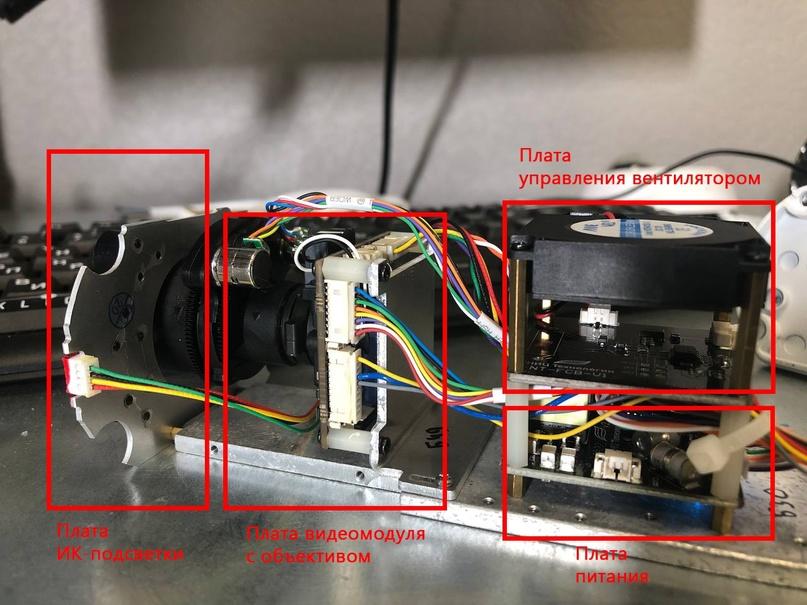
The video module is based on the SigmaStar SSC337DE processor. A very good Chinese processor.
But there is one huge drawback – the processor is soldered on the same board as the matrix.
What does it mean?
This means that the processor heats up the matrix and significantly increases the amount of its own noise. Actually, you will see this if you look at past posts. To reduce the amount of noise, you can enable DNR (Dimension Signal Noise Reduction) – this, as usual, will lead to some “blurring” of the picture and a drop in resolution. Those. your 5 megapixel camera will have the same resolution as a 3 or 2 megapixel camera depending on the DNR level and lighting conditions.
By the way in one of his videos Research Center Technologies stated that they independently developed a housing for their cameras. And this seems to be true. But this raises even more questions. Why couldn’t we choose solutions from our Chinese partners in which the processor and matrix are separated on different boards? If you are still designing a case from scratch, and not trying to squeeze your solution into a ready-made case?
Most likely, the use of such a video module led to the need to install active cooling and, accordingly, a cooling control board.
The IR LED board, power board, and fan control board are most likely self-designed and manufactured in China. And this is good. This is the right way, which allows developers to play with the efficiency strategy, even with fairly small production volumes.
The connectors were very upset. They don’t crumble just by looking at them just because they are all… Attention! Taped. Those. you glue the connectors, and they lose their only meaning – to be detachable. Maybe then the connectors are not needed? Immediately soldering the tails to the board is also more reliable from the point of view of contact, and in case of repair there is no need to unsolder the connector that has fallen into the trash from the board.
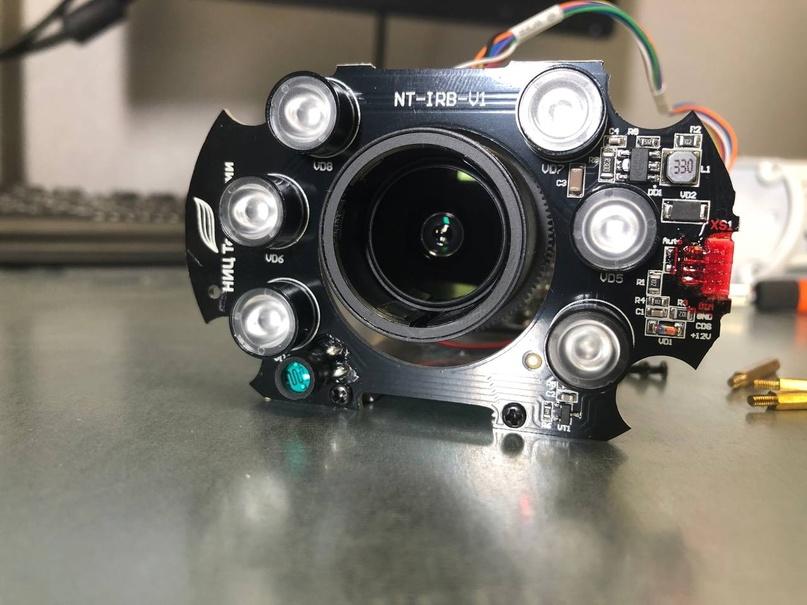
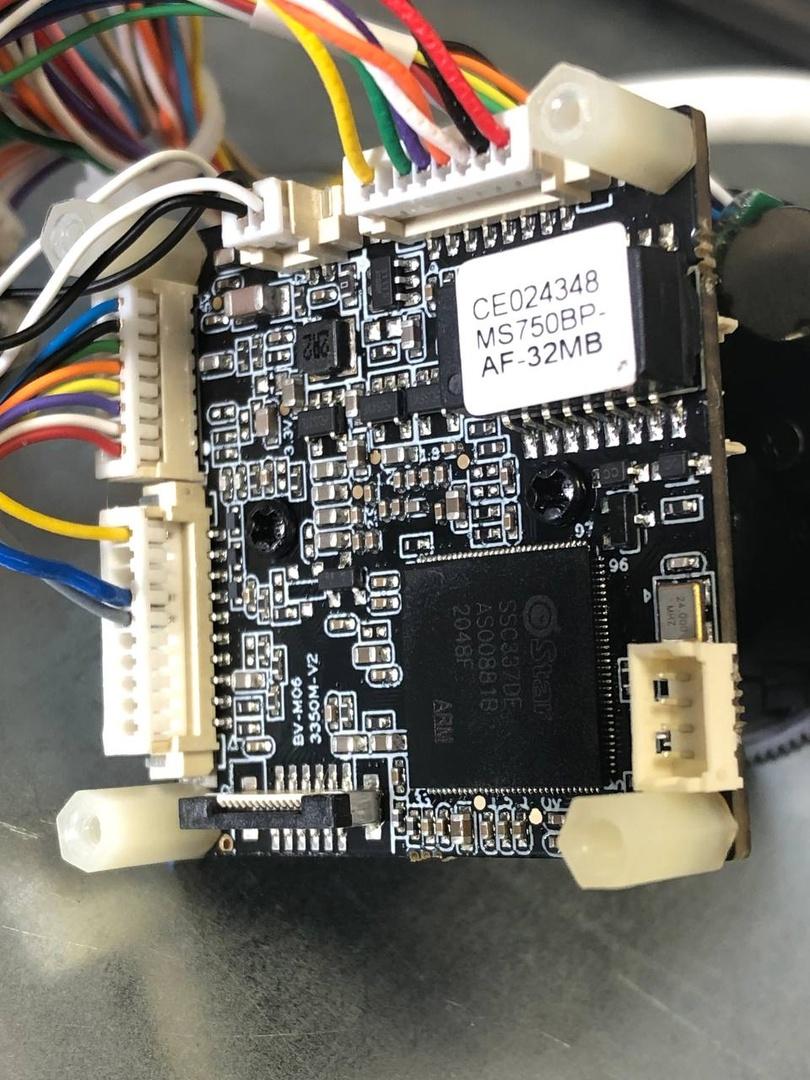
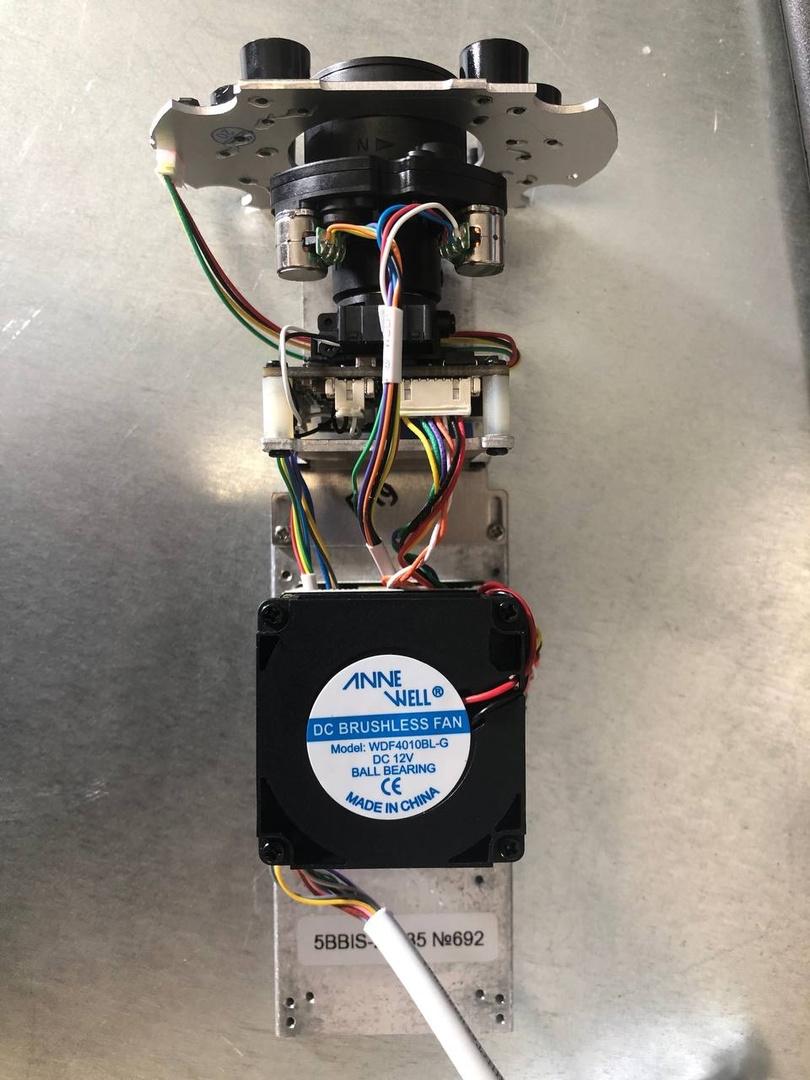
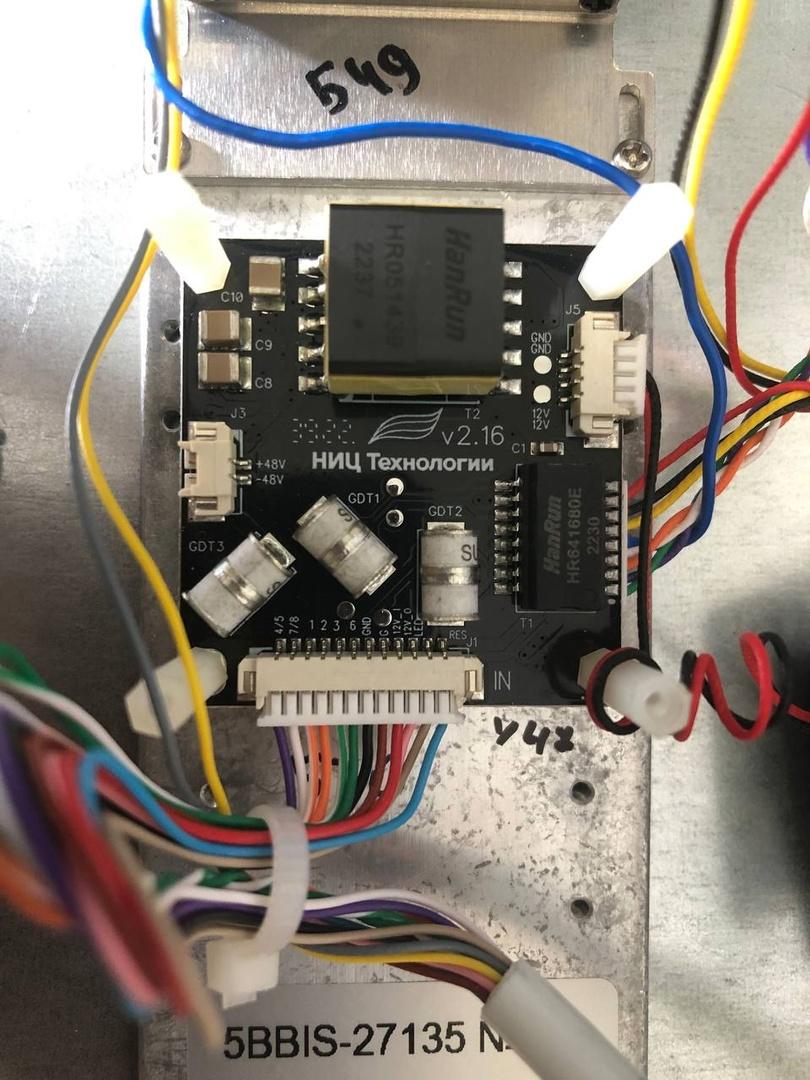
Firmware confusion resolved, Nexus firmware review
Well, it looks like we have sorted out the NICs. The firmware that I had had nothing to do with their developments. And this was confirmed by a representative of the Research Center of Technology at the IP forum.
The firmware was replaced with the words “Well, it was necessary to warn in advance that this particular firmware was needed…” Although on the website on page 5BBNN-27135 it was written in Russian that the camera had its own Nexus software. And in the instruction manual there were pictures with this particular firmware. Therefore, how I was supposed to understand that I need to warn separately is still not clear to me…
From a UX/UI point of view, I liked the firmware. A la AXIS latest firmware. BUT there are nuances… More on them later.



The diaphragm was not brought into the camera. Shutter speed and gain priorities too. There are only Auto and Manual modes. Well, there were some jokes here. The “Exposure” section was somehow infiltrated (apparently from Chinese firmware) by a strange “Light sensitivity” parameter, which we can control in Manual mode. But what do we control if we have fixed shutter speed and gain, but no aperture?
The technical support service of the Scientific Research Center “Technologies” tried to answer this question. According to them, this parameter really does not control the exposure process in any way. This is some kind of signal post-processing. But no one knows what exactly this treatment is. Either they play with brightness, or with contrast, or with tonal curves, or with a combination of several parameters.
Then why is this parameter in the “Exposure” block? Why do we need this parameter at all if there is a separate “Image” block in which we can play with Brightness and Contrast separately?

Exposure compensation is also not implemented in the camera. This means that if the camera’s exposure meter is wrong, then you cannot correct the situation in any way. Although… There is a certain parameter called BLC. All it does is raise the exposure across the entire frame to an unpredictable value. I attached 4 photos to the post, two of which are without backlight, and two with backlight.


There is also no exposure metering for part of the frame.
WDR – yes. I really liked how it works! I didn’t think I’d say this, but the 5BBNN-27135 performs scenes with high dynamic range at the level of Axis or Panasonic – trendsetters in the field of WDR technology! Really very good…
TOTAL EXHIBITION:
– no shutter speed and gain priorities
– there is no possibility of exposure compensation when the camera is in automatic mode
– it is not possible to expose part of the frame in automatic mode
– it’s not clear how the BLC and Light Sensitivity parameters work and why they are implemented at all
All this imposes serious restrictions on the use of the camera on objects where there are scenes with complex lighting. It is also necessary to use the camera with extreme caution on objects with video analytics, because Errors of the first type and Errors of the second type during analytics work strongly depend on correct exposure.
What’s the result?
Why do I pay so much attention to SIC Technologies? I do not like them? Order from competitors? Masonic conspiracy?
In fact, I deeply like what they do at research centers. Developing your own firmware is a transfer of competencies and knowledge within the country, it is a transfer of added value within the country. This is an opportunity for deep processing and customization of equipment to meet the requirements of specific tasks. This is what I’ve been talking about for the last 5-7 years!
Today, I see that research centers have a strong deficit in the field of engineering and product competencies. And this is a completely catastrophic situation with marketing. What marketing research centers do is simply harmful to the development of the company! I have already given as an example and analyzed videos from SIC on their channel – this is a Spanish shame (((
BUT. The shortage of personnel is not limited to research centers. This is a common problem of the industry and even of the country, in which R&D in the development of RES has been killed not just for years, but for decades! But good marketers don’t want to enter our low-margin market. For example, the average salary of a Head of Marketing Department (DM) in the industry is 140-180k. And in the same fintech for a similar position, salaries start from 200k. And my friend, a marketer at Bacardi (alcohol brand, for those who are into healthy lifestyle) who is responsible for PR and Event directions (i.e. not even ROM!) receives approximately 300-350
In general, I hope that my albeit negative, but nevertheless reasoned analyzes will help SICs make a high-quality and worthy Russian product! I will continue to follow the developments of research centers. Moreover, already in the new year they promise new firmware on a new architecture.
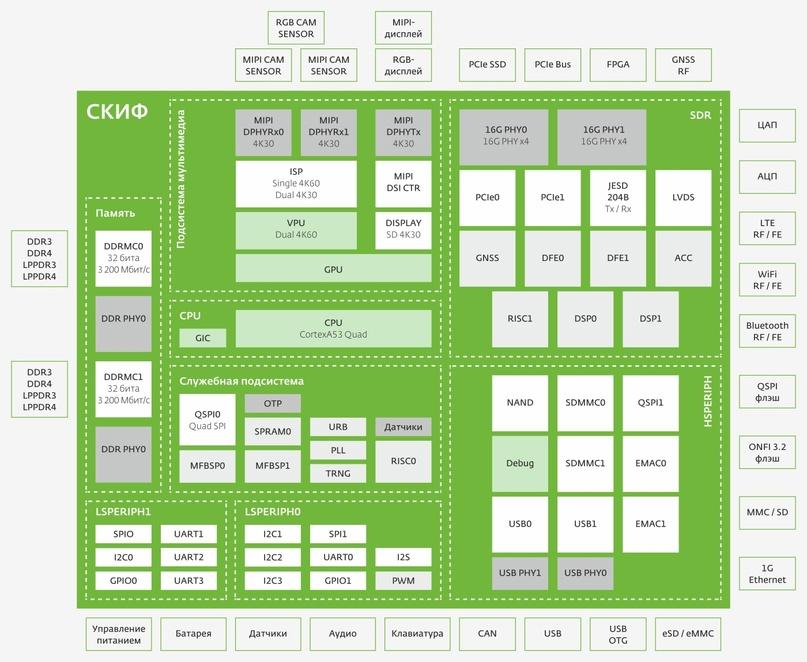
I’m also currently testing cameras from ELVIS based on the SKIF processor (https://elvees.ru/chip/processors-multicore/skif). So far prototypes. But it’s already very good. I can’t do reviews on them because of NDA. But as soon as serial samples appear, I’ll definitely do it!
Peace and goodness to everyone!
Well, a little from me
Maxim quite objectively and completely highlighted all the shortcomings of both the cameras of the Research Center “Technology” and, most importantly, the marketing policy. As they say, honest people have nothing to hide, but here we see some concealments, inconsistencies, difficulties with purchasing – all this looks like an attempt to mislead the audience, or some kind of murky grant-eating.
Yes, they don’t look like garage production, like Si-Cam from the previous review, but still there is some sediment. In any case, I prefer to form my opinion based on my own experience – and my camera will arrive next week, so I’ll say goodbye to you for just a little while!
